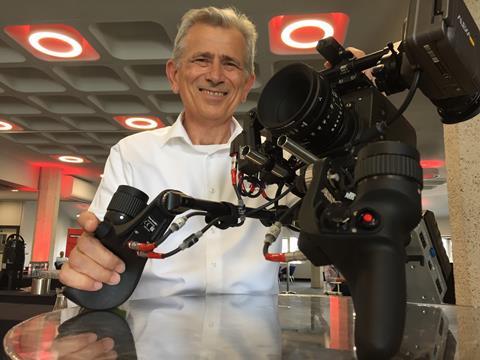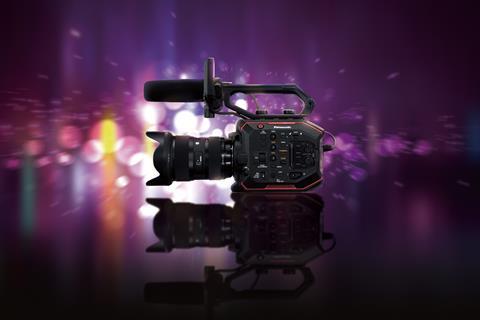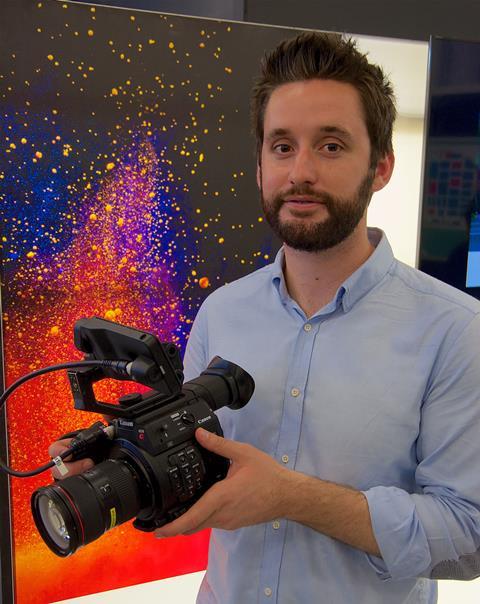With the range of tools available for acquiring HDR content greater than ever, productions are embracing the opportunity to create “natural and life-like images”.
Until very recently, TV sets couldn’t show the full range of light, contrast and colour that our eyes can capture. Now, using high dynamic range (HDR) displays, they can.
Your eye typically captures 10-14 stops of latitude (from dark to bright), helped by being able to almost instantly adapt to any changes and by having two eyes which react independently.

Because the eye reacts so quickly, our dynamic range within a single panorama may be far more (possibly 20-24 stops), but the lower number is probably a fairer reflection of more typical scenarios, which is handy as most recent cameras offer similar performance.
This added realism of HDR is one reason productions are moving to it - another is that it is part of the Ultra HD standard.
In the sort of markets Arri operates in, HDR is becoming commonplace, not just for movies and high-end drama but for shows like The Grand Tour.
IBC2017 HBO Camera Assessment – Season Five Arri, Red, Panavision, Canon, Panasonic and Blackmagic Design cameras will be tested with footage shown on the IBC Big Screen
“If you have a good HDR-capable TV set and go on Amazon Prime, you can watch these mind blowing images,” said Arri Director of Business Development Milan Krsljanin.

HDR, “when beautifully shot and not over exposed and graded sympathetically looks just gorgeous,” he added.
Indeed, some content producers now see HDR as being more important than resolution, and he believes this will give rise to more emphasis on HD HDR in future. “A lot of broadcasters in Europe relying on terrestrial delivery simply don’t have the bandwidth for Ultra HD,” so HD HDR could help them compete, especially as “HDR makes pictures look sharper, more contrasty and punchier.”
Sebastian Leske, Product Specialist for Broadcast & Cinematography at Sony Professional Solutions, is also seeing a lot of demand for HDR for HD, but that doesn’t concern the camera.
Sony’s high-end cameras have been shooting HDR for about five years, and most of their pictures have been used in HD, even if they can shoot at higher resolutions.
Krsljanin believes that shooting HDR should be simple.
“You shoot Arriraw or Log C and you’ll capture unprecedented latitude and massive colour capability. Then just go into the grading suite and play,” he said.
“A lot of people make huge mysteries out of HDR. You just need a good camera, a good cinematographer, and a little help from God with the lighting.”
To check the pictures on location, you need a true HDR monitor, which should conform to BT2100 (2020 and 2100 both have the same colour space, but 2100 includes HDR), and then apply the appropriate LUTs (look-up tables) to translate the flat Raw or Log image into something worth watching.
“With Log C you get amazing latitude, more than you can even display,” typically 14.5 stops, said Krsljanin.
“People often need that latitude in order to hide something as well as showing something. Sometimes people want things to go into deep shadows and not be seen.”
In most cases, productions can be shot as they always have been, “but sometimes people later say ‘if I knew that it looked like this I would have changed’, because HDR is more natural, a more life-like image, and if you are not careful you may see some artefacts that you didn’t see in Rec.709.”
Compressed recording may be a problem, he added, “since HDR may show compression artefacts more prominently than Rec.709.
Non-compressed Arriraw or mildly compressed ProRes 444 or even 422 HQ would give plenty of headroom for grading, making it worry free and delivering amazing results.”
Of course, the less compression you have, the more storage you need.
Another possible problem with all the extra latitude is that flaring with certain lenses that may look stylish in Rec.709 can become too noticeable.
Like most camera manufacturers, Sony first started supporting HDR for high-end cameras, particularly for drama, with the F55 and F65, and as demand for HDR grew for live broadcasts in Ultra HD, it introduced the HDC-4300 and HDC-4800.

Typically, drama users shoot S-Log or Raw, which requires grading in post production. This is also the workflow used by its mid-range cameras, the F5 and FS7, “but if you are an FS5 or Z150 customer, it is a different story.
“People at this level want an instant HDR workflow, so they can just do the edit and view HDR,” said Leske.
This is achieved using a free new software update to allow Hybrid Log-Gamma, the live HDR production system developed by the BBC and NHK.
“Where S-Log3 requires grading in post production, HLG takes a different approach to read the content directly into a gamma curve that is suitable for HDR display but is also compatible with an SDR screen. It is not designed for a post workflow.”
The HDC-4300/4800 can be used with either S-Log or HLG.
“S-Log3 gets the best out of the sensor. With HLG you can still do some post production, but not on the same scale as S-Log3,” he added.
However, to get the highest HDR quality out of Sony cameras, Leske recommends shooting Raw or the new 16-bit X-OCN (Extended Tonal Range Original Camera Negative) recording format developed for the F5 and F55, which offers “the highest flexibility and picture quality.”
Even though X-OCN is lightly compressed to make the most out of expensive memory cards it requires an add-on AXS-R7 recorder, so for people who can’t afford that Leske recommends shooting X-AVC with S-Log3.
“You still have 10 bits, so really high quality, but they don’t consume the same bitrate as Raw.” Once the pictures have been graded, they can be encoded in HLG for broadcast delivery, or PQ for cinema or Blu-ray.
“HDR is not only about dynamic range but also about colour,” said Leske.
“You’ve got to be careful not to under expose the image, because if you’ve got to bring the areas back in the grading you will get noise in the shadows. It’s better to over expose a bit, because you can bring it back in grading and push the noise down.”
Keeping control of noise is vital to good HDR agrees Richard Payne, Head of Technology, Holdan, which is distributing Panasonic’s upcoming AU-EVA1.

This Super-35mm sensor, 5.7K camera offers the same dual ISO capabilities as the VariCam, using two signal paths - one with high gain and one with low gain.
“It means you can get higher ISO output with lower noise,” he explained.
The camera offers the same V-Gamut colourimetry and V-Log gamma as the VariCam.
V-Log has exposure curve characteristics reminiscent of negative film while V-Gamut delivers a colour space larger than film, making them ideal for HDR.
Although 5.7K output won’t be available initially, it will come in a firmware update, and the Atomos Shogun Inferno promises to record the EVA1’s Raw 5.7K and provide HDR (1500 nit 10-bit) monitoring, so could be a useful addition to the sub-€8,000 camera.
Canon now offers three HDR-capable cameras, the new C200, C300 MkII and C700, using Canon Log.

James Burwood, Canon UK’s Professional Products Manager, sees C-Log 2 as being useful for commercials or features, as “it offers the widest colour space, most flexibility and freedom to get the most out of it - with 15 stops latitude.”
C-Log 3 only offers 14 stops (although this is more than most monitors can cope with), but the same wide colour space, and is designed for faster turn-around production. “We control more of the variables in C-Log 3, so users can’t change as much. It’s a friendlier, easier C-Log to use,” said Burwood.
The C700 can shoot Raw and ProRes, while the C200 offers Raw Light, providing 15 stops of latitude.
It is 20-33% the size of Raw, offering about 30 minutes of recording time on a 256GB C-Fast card (recording internally).
Both the C700 and C300 Mk II have to use external recorders for Raw. The 4K-capable C200 also offers high frame rates and improved auto focus, and will cost £7,200 including VAT.



























No comments yet